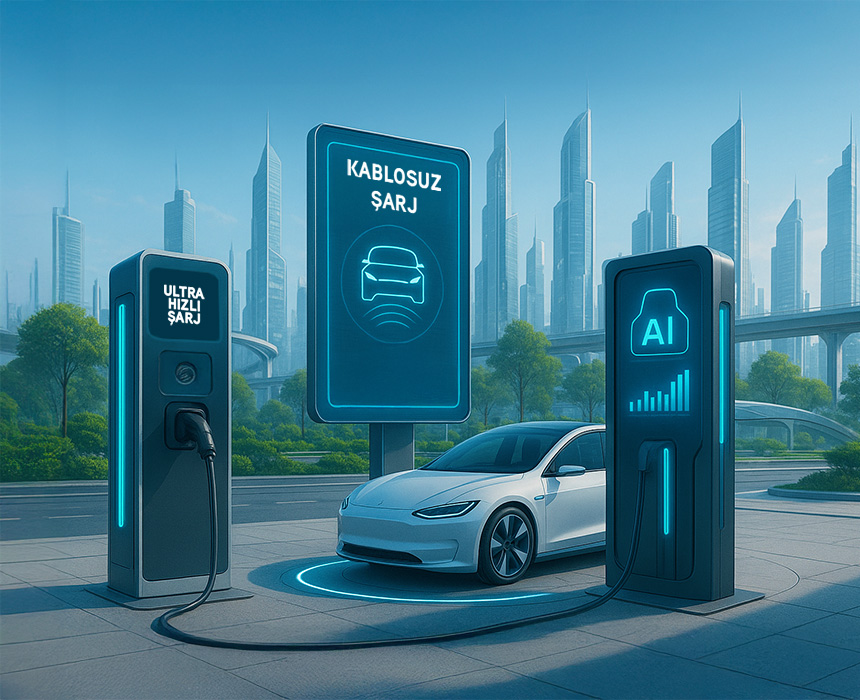The Future of EV Charging Stations: Trends Towards 2030
The electric vehicle (EV) ecosystem is rapidly growing. By 2030, it is estimated that more than 200 million EVs will be on the roads worldwide. This fast transformation makes it essential for charging infrastructure to develop at the same pace. So, what can we expect from charging stations in the next 5–10 years?
1. Ultra-Fast Charging Technologies
Chargers with 350 kW and above, capable of filling up to 80% in just minutes, will transform the user experience during long journeys. For EV owners, charging time will become as short as refueling.
2. Wireless Charging
With inductive charging technology, vehicles will be able to receive energy wirelessly while parked. By 2030, this is expected to become widespread, especially for taxi fleets and shared mobility companies.
3. AI-Powered Smart Charging Management
Charging stations will use AI algorithms to analyze energy demand forecasts, ensuring grid balance and providing cost advantages to operators. In the U.S., these systems will also need to comply with DOE, FERC, and SAE standards to operate efficiently.
4. V2G (Vehicle-to-Grid) Integration
With V2G, vehicles will not only be consumers but also energy providers. By 2030, a new energy-sharing model will emerge for homes, businesses, and cities.
5. Compliance with Global and Local Standards
In the U.S., DOE, FERC, and SAE standards will guide safe and reliable operations, while internationally, protocols such as OCPP 1.6/2.0.1 and OCPI will enable a seamless and interconnected charging network.
Conclusion
By 2030, EV charging stations will evolve from simple energy supply points into smart, integrated, and sustainable energy hubs. For operators, the right technology investments and intelligent software solutions like ChargenOS will be the key to future competitiveness.




